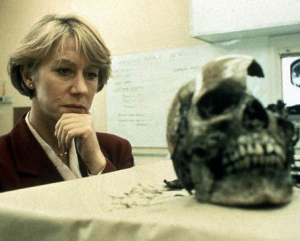PSWA Newsletter
March 2018
PRESIDENT’S MESSAGE
 Happy Almost Spring, fellow writers!!
Happy Almost Spring, fellow writers!!
Once again, it’s been a busy few months since the last PSWA newsletter. Seems many of our members have exciting news such as book launches, awards won and even one who is running for sheriff (Good Luck, Mike Angley!!) During this time, your Board of Directors met to discuss the current operations of the Association, as well as, exciting plans for the future. Our main goal, as a Board of your peers, is to make sure that this Association continues to meet the needs of our membership and offers what YOU want from us not the other way around. As part of our three-day business meeting, we talked about our purpose. What is it that we do as an Association? We came up with two very clear areas.
Professional Development: Why are most of us part of this organization? Because we’re writers or we want to be writers. Most, if not all (actually it should definitely be all) of us want to be published writers. We want our words out in the world for all to see and judge. (Ok, the judging issue is just part of the writer’s world. Most of us really don’t want that part.) PSWA members are not in competition with each other.
What I’ve found over my thirteen years with the Association is every one of the other members wants to see me succeed and is willing to do everything reasonably within their power to help me do so. Along with the members, PSWA benefits also support this goal. We offer a manuscript critique for new members. If you’re a not-so-new member but have never used this benefit, you still can. We all get one.
The annual writing contest is another way as most entries are given a critique for what works and what doesn’t work as well. There are also the nifty “Award-winner” stickers that you can use to mark up your books and generate more interest.
Finally, the best way to jump-start your writing knowledge AND public safety knowledge is the annual Writing Conference. Most former attendees will tell you that it was invaluable and that they return year after year for more. Speaking of professional development, don’t forget that there are PUBLISHERS at the conference and they want to hear your pitches. They want to help you meet your goals. I got my first non-fiction column after pitching the editor-in-chief at the conference. I’ve now been writing (and getting paid for) two columns a month for that venue for twelve years.
Camaraderie: When you join the PSWA and enjoy the benefits, such as coming to the conference you make life-long friends. We cheer each other on both personally and professionally. We pat each other on the back and give words of encouragement when the writing gets tough or the rejection letters seem to never stop. We get to know each other and offer support when grief and loss come around. We are more than just a group of writers who talk about writing and public safety stuff. We are a group of friends.
What is the Public Safety Writers Association all about? Writing and making friends. Making friends and writing. I hope that each of you will continue to grow within this organization. There will be opportunities in the near future for members to step up and start taking some leadership roles. I also hope you will encourage your friends to join us and continue to build a strong membership. Lastly, I hope that every one of you will enter the writing contest AND register for the conference. Don’t hesitate. Don’t wait. It will be worth every cent you put into it. After all, isn’t the business motto, “You have to spend money to make money”? Invest in yourself. Invest in your future. The world needs your writing. Don’t deprive the world. That’s just rude.
Happy writing,
Michelle Perin, PSWA President
STAND UP, HOOK UP, SHUFFLE TO THE CONFERENCE
Register Now for the 2018 PSWA Conference
 Spring is just around the corner, and the thirteenth annual PSWA Conference is once again coming up on July 12th-15th at the fabulous Orleans Hotel in Las Vegas, Nevada. We’re calling this one our “Baker’s Dozen,” because it’s packed with so many fun things and surprises that it’s sure to be one of our best yet.
Spring is just around the corner, and the thirteenth annual PSWA Conference is once again coming up on July 12th-15th at the fabulous Orleans Hotel in Las Vegas, Nevada. We’re calling this one our “Baker’s Dozen,” because it’s packed with so many fun things and surprises that it’s sure to be one of our best yet.
But onward… Let’s talk about the friendliest, most fun, and affordable conference of them all.
Let me first mention the Pre-conference Workshop. It does cost an extra $35 but begins at nine AM on Thursday morning. During this six hour, intensive workshop, you’ll get the lowdown on writing techniques such as point of view, building and maintaining suspense, and a personalized critique of your submitted manuscript that offers professional feedback on your writing. It’s just the thing to take your work to the next level. Between the three instructors, they’ve had enough books published to fill a bookstore and each knows the ins and outs of the publishing world.
As far as the conference itself, things get rolling Thursday afternoon as check-in begins at three PM. You can pick up your name badge and bag of conference goodies, and pick out a special gag ribbon that will clue other people in on your personality.
As usual, we’ve lined up our customary fabulous speakers. Retired LAPD Detective and prolific writer, Mike Brandt will tell you “100 Things You Should Know About Your Character.” Mike’s given this presentation all over the place to groups of mystery writers. Award-winning writer and professional editor, Susan Tuttle, will talk about “The Art of Self-Editing,” which as any writer knows, is a crucial part of turning out publishable work.
Publishers Austin Camacho and his lovely wife, Denise, (Intrigue Press) will join our old friend, Mike Orenduff (Aakenbaaken & Kent), on a publishers’ panel that will not only give you the lowdown on what the industry is looking for today, but they’ll also be available to hear pitches on new projects. So have your elevator pitches ready.
Our own Keith Bettinger, who provided crucial support services to first responders during the Las Vegas shooting last fall, will talk about the experience along with another individual who was also involved.
And Gloria Casale and J.L. Greger will tell you how to get away with murder with their dual presentation of “A Little Knowledge Can Be Poisonous.” I’m still working on a couple more, and I’ve got lots of outstanding panels lined up that will give you the information on various aspects of public safety and writing. I’m happy to say that our long-awaited panel on firefighters, “Battling the Indomitable Foe,” is also scheduled. Plus, we’re in the process of assembling our annual mystery radio play.
And last, but certainly not least, don’t forget our annual Writing Contest. There’s still time to enter your work and possibly become an “award-winning author.” The variety of categories are open to both published and not yet published authors. Take it from me, you can’t go wrong entering this one.
So register today, if you haven’t already. This conference has it all. The hotel is great, the rates are very affordable, the meals are first rate, and you’ll have an opportunity to rub elbows with other writers and those who’ve walked the walk in various fields of public safety. You won’t want to miss it.
—Michael A. Black, Conference Chair
PREPARING FOR A WRITERS’ CONFERENCE AND THE MUST HAVES
 Writers should attend a writer’s conference every three years to update their skill sets, current trends, emerging markets and meet new writers. It’s the “nuts and bolts” that keep you current in an already overcrowded industry that will propel your career. It gives you the opportunity to meet a wide range of people, making new contacts, attending after hour social functions and most importantly networking with like-minded people.
Writers should attend a writer’s conference every three years to update their skill sets, current trends, emerging markets and meet new writers. It’s the “nuts and bolts” that keep you current in an already overcrowded industry that will propel your career. It gives you the opportunity to meet a wide range of people, making new contacts, attending after hour social functions and most importantly networking with like-minded people.
With that said, how do you optimize the experience?
Have a Game Plan: Conferences can be overwhelming, especially when they are three days or longer. Review the conference agenda and highlight the most relevant sessions that impact your writing career. Be clear about your strengths and weaknesses.
Set Goals up front. Stretch yourself with topics that you are unfamiliar with to expand your knowledge base. This is about you and what you want to get out of a conference. My goals are to learn three new writing skills/techniques daily, meet three new writers daily and thank three speakers or conference organizers daily.
Research the speakers and their recent book releases, find commonality and talk to them after their sessions. Knowing something about them will lead to asking the right questions that will help you in your writing career. Always thank them.
Dress and conduct yourself professionally. You might want to layer clothing so as not to bring unnecessary weighty items, but remember, conference rooms are generally cold. Business casual is acceptable and makes a good impression. I wear a blazer at evening events, but no ties. When you attend receptions, welcoming events, after hours parties, always remember that you are not off-duty. Writers, agents, publishers, editors are watching your conduct and bad behavior could cost you a contract.
Networking Game: You most likely will find yourself in breakout groups before, during or after the conference. If you want to network and the conversation wanes, have some icebreakers such as, “Everyone give a one- or two-minute talk about their recent accomplishments.” Sit with new people at lunch, dinner and at events. Conferences are about meeting other writers. Take advantage of the opportunities available. Always wear your conference name tag so others can identify you and don’t take it off until you are driving home or on the plane.
Have a thirty-second pitch: Wherever you are in your book, have a pitch ready and memorize it. A pitch can be referred to as an elevator speech, logline or storyline. Imagine that each word cost $10.00 and K.I.S.S. A pitch should include the main character, conflict and what’s at stake. Practice on friends or at writer’s meetings with members who will give you an honest opinion.
One-sheet: this is a single sheet containing the title of your project, genre, word count, your photo, a short bio and your contact information to be handed out to interested editors, agents or publishers.
Conversation starters: “What do you write?” “Where are you from?” “Are you excited about the keynote speaker?” This is about social interchanges with fellow attendees and keeping yourself engaged in conversations; do not monopolize conversations.
A notebook: If you are not taking notes, you are not learning anything. Table space is often limited at conferences; bringing large electronic devices may be impractical. You can only spread out so far at a tightly packed conference.
Take plenty of business cards and don’t be afraid to tactfully pass them out. If you have a recently published book, you may want to bring free promotional items highlighting your book such as bookmarks, postcards or ballpoint pens promoting your book
If session audio recordings are available, you may want to attend sessions that do not record and listen to the recorded sessions later giving you more opportunity to expanding your learning tracks.
Avoid time travel by focusing on each and every presenter. Don’t zone-out or text people while in sessions. Become an active participant by asking questions and making comments. Be an extrovert, you paid for it!
Thank the planning committee for the hard work they did to prepare for this conference. It’ll be greatly appreciated and you can make new friends at the same time. Buy at least one author’s book while at the conference and ask them to sign it.
Seeking solutions to your key questions:
- Can I articulate my writing project clearly?
- How does the conference bring me closer to my writing goals?
- What do I need to learn or help improve my skill set?
- Who are the people I want to connect with that can take me to the next level?
What apps should you have: Linkedin so you can connect immediately with other writers you just met. You may want a separate Facebook fan page for writers v. using your personal Facebook page, along with a Twitter, Instagram, a dedicated website, Goodreads, Pinterest and a blog site as starters. You will need these when you publish your book.
Things to consider taking: Notebook, pens, pencils, a tote-bag or small backpack to carry things, some cash for unexpected expenses, mints, iPhone charged w/cord, and a laptop w/cord to document the days’ notes and promotional items and an empty flash drive.
Portable battery chargers: Going back and forth to your room to recharge devices can prevent you from hearing a great speaker, so purchase an inexpensive charger, or arrive early and find wall or floor electrical outlets for your cables to recharge your devices.
Take a camera or use your iPhone camera to take pictures at the conference and especially with new friends.
Always follow up with a short thank you email to the new writers you met, speakers, and those that can help your further your career.
You are paying $300-$500 to attend, so get the most out of it and take advantage of every opportunity offered. Good luck at your conference and be the best writer you can be.
—Michael Brandt
Editor’s Note: The above is great advice no matter what writers’ conference you may be attending—we hope it will be our PSWA conference.
SMARTPHONES AND EXERCISE
I enjoy going to the gym for a workout and expect that my time will not be wasted or my workout interrupted by others. Lately, I’ve noticed a growing problem, one that also seems to be the new normal. Smartphones are taking over a once trusted escape from the toxic world—the gym–and wreaking havoc on the smooth flow of people’s workouts.
Don’t get me wrong, smartphones are probably one of the greatest technological inventions of the 20th century. I was amazed at the breadth of what the phone is able to accomplish, and it seems for many this small marvel has replaced the computer. Despite its usefulness and capabilities, it has had some negative impact on health. Recent research published in the International Journal of Behavioral Nutrition and Physical Activity indicates people who spend the most time on their phones tend to be less fit than those who use their phones less.
In interviews with 305 college students about their cellphone use and physical activity at Kent State University, researchers learned those on the phone most were the least active. Using a follow-up fitness test of 49 of the students, the ones who least used their phone were fitter than the others. The results seem appropriate, constantly checking one’s phone and surfing the net takes time. That wasted time could be better spent, some of which could be at a gym staying or getting fit.
But many people take their phones with them to the gym. Good or bad idea? For the most part, bad. An article in Time magazine by Amanda MacMillan says research shows, “Texting or talking on the phone while exercising can worsen your balance and workout intensity.” Another study in the Performance Enhancement & Health journal found that “Texting during exercise impacted balance and stability by 45%, compared to not using a phone. Talking on the phone made balance 19% worse—less than texting, but still significant enough to contribute to injuries.”
A study in Computers in Human Behavior found that people texting while exercising for 20 minutes spent at least 10 minutes in a low-intensity zone and only 7 minutes in high intensity. Those working out without phones spent only 3 minutes in low intensity. The results are surprising, given that college students were tested. This group of tech-savvy digital age people seems like the type to be adept at multi-tasking. The question becomes if the younger generation is greatly impacted by phone use during exercise, how does it affect older adults? Some good news did come from the study, however. It seems listening to music had “no notable impact on balance.” In fact, the study showed intensity gets a boost from music. Rock on.
So aside from the medical and scientific downside of using your phone during workouts, how about the practical aspects? It seems more people are staring at their phone at gyms instead of focusing on working out. Not being able to disconnect for at least an hour a day seems symptomatic of a larger problem. Are they afraid of human interaction, or is their addiction to their phone a drug-like habit?
Being on the phone at the gym is simply rude. I can’t tell you how many times I’ve seen someone sitting on a piece of equipment while texting or surfing the net. This practice is particularly egregious when the gym is crowded. As we’ve learned from studies, intensity suffers when we’re distracted. Our normal rest period between sets may be 30 – 60 seconds. However, if you’re glued to your phone that could easily turn into minutes. Thus, your results suffer by taking long rests and your time spent at the gym is not as productive.
What about using your phone in a germ-infested environment like the gym? According to a study in the Clinical Journal of Sports Medicine, rhinoviruses were found on 63% of the gym equipment at the fitness centers they tested. That includes machines, barbells, dumbbells, gym mats … all were found to be breeding grounds for germs. Granted, many of us wash our hands before leaving, but how many sanitize their phone screen? Those germs are sitting there and are going home with you.
What about accidents? Gyms are dangerous places with lots of heavy equipment, loud noise, and people moving about, some of whom are not paying attention. The likelihood of getting injured is pretty high if your face is in your phone. And there’s a good chance of your phone becoming damaged by a piece of dropped equipment or someone stepping on it.
One of the secrets to a great workout is intensity. If you’re tweeting, texting, and taking selfies, you’re just not into it. Your concentration is gone along with your intensity. Most of that phone activity can wait until you’ve finished, and an added benefit is that you’ll probably complete your workout much quicker without having had your face in your phone.
Stay Safe, Brothers & Sisters! (And stay off your phones.)
—John M. Wills
ENTERING WRITING CONTESTS
 Contests are a no-brainer for me. I can directly attribute my entry into the realm of traditional publishing (albeit a small press) to winning a contest. I’ll bet many authors could say the same.
Contests are a no-brainer for me. I can directly attribute my entry into the realm of traditional publishing (albeit a small press) to winning a contest. I’ll bet many authors could say the same.
In 2012, I entered my unpublished manuscript, working title Probable Cause, in the Public Safety Writers Contest (PSWA). I won third place in my category-unpublished novel. Now re-named, By Force or Fear, I soon self-published it on Smashwords as an eBook, in the hopes of getting enough money together to do a print version. Meanwhile, I worked on mapping out the second book of the Nick and Meredith Mysteries (I’m a compulsive plotter).
After months of writing, querying, submitting and all-around frustration, I entered my novel, in a contest at Oak Tree Publishing (OTP) Cop Tales. Oak Tree had recently published an anthology for the PSWA, so I thought it would be worth a chance. I was stunned when I won. First prize was publication of the winning book. I’d entered my second Nick and Meredith Mystery, Intent to Hold. It had just won second place in the unpublished novel category the PSWA’s 2014 Writers’ Contest. After a polishing up, my new publisher agreed to publish the first novel, now renamed By Force or Fear.
As events progressed, I published both novels with Oak Tree Press with the third, With Malice Aforethought, in contract. Sadly, Oak Tree’s production has fallen into limbo with the ongoing health issues of its publisher, Billie Johnson. Johnson offered many OTP authors their rights, so I took mine. The short version of this story is I now have another publisher, Aakenbaaken & Kent, with whom I’m very pleased. I’m currently working on another Nick and Meredith Mystery, working title, Felon with a Firearm. I’m hustling to get it finished for the next PSWA writing contest that opens in May.
I’m also looking into other places to submit my work for competition. In 2015, the East Texas Writers Guild awarded Malice third place in “Best First Chapter” category.
Contests count. They give the author credibility. Winning a contest means someone other than your mother likes your work. Agents and publishers look at winners differently. It’s a terrific marketing tactic to use, “Winner of the Agatha Award” on the book cover. But for me, it’s a wonderful confidence booster to win a writing contest. Winning motivates me to work harder for the next entry. It also helps me to set goals. Having a first draft by May 1st, the usual deadline for PSWA’s contest, is a typical goal. I’ll make Felon the fourth try to come in better than Malice’s second place in 2016.
Think about entering a contest. It might jump-start flagging progress on your WIP, you could set and meet realistic goals, or even better yet, you could win!
—Thonie Hevron
BEING A GUEST ON A BLOG
Being a guest on someone’s blog is yet another way to promote yourself and your book. It is a means to introduce yourself to the readers of that blog who may never have heard of you or what you write. Several of our members have blogs—and here are two that welcome guests:
On every Friday at 6 A.M. Just the Facts, Ma’am, Writer’s Notes, posts articles of interest to writers. February’s topic is contests and will include PSWA member J.L. Greger, author of several science-based mysteries. Her topic is, “Do You Feel Lucky?” As always, I start the month out and invite guests to post on subsequent Fridays. March will “Stir Things Up” as an ode to the doldrums of the season. April features a self-explanatory “April Fools” and May will discuss “Fans.” As authors, you are invited to contact me if you’re interested in writing for the blog. Alternately, Sundays are completely cop-oriented. Now, I have three LAPD veteran’s serving up stories from their days on the street. If you’d like to pitch a story, email me at badgec65@gmail.com. Several PSWA members have already appeared
–Thonie Hevron
On my blog, Marilyn’s Musings is a lot about me and my life and my writing—but I also love having guests. The blog is https://marilynmeredith.blogspot.com/ and all you have to do is email me at mmeredith24@ocsnet.net
When you are a guest on someone’s blog, you need to promote it on the day you appear. How do I do that, you ask? Mention it on Facebook, any Facebook groups you may belong to, and listserves where you are a member, and anywhere else that you communicate with others. Then be sure to check the blog throughout the day(s) you appear and respond to comments others have made.
–Marilyn Meredith
SAFER LIVING IN APARTMENT AND CONDO COMMUNITIES
As a featured speaker during the last PSWA Conference, I mentioned some Crime Prevention Through Environmental Design (CPTED –– pronounced SEP-ted) concepts that may need further discussion. I know that I said one of the topics would be on “Types of Fencing,” but I decided to save that for another time.
In this edition, I will give some thoughts on …
- Tilting vs. Level Carport Covers
- Which Way Pool Gates Should Swing- Inward or Outward
- Building Numbers
If you or someone close to you live in apartment or condo complexes, make sure your management is aware of these ideas to provide a safer living environment.
Carport Covers
Theft and burglary from vehicles, and vandalism are common crimes for those who live in apartment complexes. Rows of vehicles parked in the open and under carport covers provide prime targets for these type of criminals. One CPTED strategy to be a deterrent to criminal activity is to enhance observation.
Residents living on the ground level apartments can easily see the vehicles outside under carport covers by looking out their unit window(s). However, residents who reside on the second floor can only see approximately the front half of the cars below. And the third-floor residents, even less. Of course, the distance the parking lanes are from the building structure has considerable impact on this “line of sight.”
A way of improving the visibility of parked cars from the upper-story apartment windows is to tilt the carport roof upwards with the edge of the roofline closest to the apartments raised higher. This increases the angle and ultimately improves the line of sight from residents’ windows. And with increased observation, thieves are more likely to be seen and thus their devious acts reduced. A tilted carport cover also will improve rain drainage, and prevent those basketballs and some other toy objects from getting caught on carport covers.
Pool Gates
The community pool and spa area in apartment complexes are surrounded by a fence as required by ordinance for safety. However, often the weakest “link” to this barrier is the pool gate. Ordinances also require pool gates to have a self-closing device and locking latch to prevent toddlers and non-swimming children from gaining access to the pool area.
So why is there a concern about which way the gate should swing…inward or outward?
First a basic understanding of human anatomy and human nature. Our feet are designed in a manner that makes it easier to walk forward. Sure, we all can walk backward, just not as easy. At about the age of one year, children start learning to walk…FORWARD. Maybe it’s because of the feet design, or because we have eyes in the front of our skull. I’m speaking from a lay person’s assessment, not as a physician.
But as a “trained observer” (that’s what cops are, right?)…I find that the most people will also PUSH before PULLING. Watch how people enter a door that has no signage of “Push” or “Pull” on it. And my simplistic physics explanation is that it takes more energy to walk up to a door, stop the mass of body weight, reverse direction, and pull open the door than it does to continue walking forward and pushing open the door. Think of pushing a car. The hardest part is getting it moving, and once it’s going, you don’t want to have to stop and start over. So I know that when I have to stop my “mass” (and there’s plenty of it), I want to save energy and keep moving forward and push on every door that I encounter.
Now, how does this impact a pool gate’s swinging motion? Gates that swing inward (i.e., towards the pool) and fail to swing back closed and completely locked are an invitation for disaster. A curious toddler can walk forward and push open the gate. Then the child is inside the enclosure. If a gate is hinged to swing outward, and fails to completely shut and lock, chances are better that the child will walk forward and push again. Only this time the gate will more likely click and lock.
Building Numbers
To save money, apartment owners and managers typically place a building number or letter on only one side of the structure. First responders often are delayed in finding an apartment because of the improper placement of these identifiers. Building numbers or letters should be mounted on all four sides of each building. Many times, placement is located at the top above the lights. So at night, the lights are shining downward and the numbers are nearly invisible due to them being in the shadow and dark area above the light. Building identifiers need to be placed below the exterior lights on the sides of each structure.
Another good reason for numbers to be placed on each side of the building in multi-complexes is that when a police officer goes in foot pursuit of a suspect and catches the suspect, he needs to be able to broadcast his exact location to his back-up. Running through a maze of apartment buildings, and not being able to see a building identifier, can lead to disaster or an officer who is fighting for his life, or has been injured. The last thing a dispatcher or other officers want to hear is:
“Shots Fired! Officer Down! I’ve been shot. I’m somewhere in the Berylwood Apartment Complex between Buildings…between buildings …??? I can’t see a number. Help me!
Stay Safe!
–Ron Corbin
Author of Award Winning “Beyond Recognition”
www.rcorbinsecurityauthor.com
FICTIONAL FEMALE INVESTIGATORS
 “A bit of a boys’ club,” says Kristen Lepionka about the place of women detectives in the world of crime fiction. In her new novel, The Last Place You Look, she took on the task of creating a credible female private investigator and immediately discovered the female point of view involves “much more than just a difference of chromosomes.”
“A bit of a boys’ club,” says Kristen Lepionka about the place of women detectives in the world of crime fiction. In her new novel, The Last Place You Look, she took on the task of creating a credible female private investigator and immediately discovered the female point of view involves “much more than just a difference of chromosomes.”
Women’s life experiences and their interaction with crime (either as police, private investigators, or amateur detectives) are just so different than men’s. In detective fiction, she says, they battle “rampant sexism, being underestimated, excluded, and harassed.” Oh, and they also must solve cases.
This lesson is oh-so-clear to me having just read a crime novel with a female protagonist, written by a man, which would have been much better had he named his main character, say, Sam instead of Samantha, and recognized he was writing a man. This character never seemed like a woman to me, though he gave her one annoying trait meant to symbolize the feminine sensibility. Every other page, she started crying.
Lepionka created a list of ten fictional female detectives she thinks really work and they’re written by both men and women (see the article at https://www.theguardian.com/books/2017/jul/26/top-10-female-detectives-in-fiction )
From her list, I’ve read books featuring: Antoinette Conway (a character created by Tana French); Alex Morrow (Denise Mina); and Smilla Jasperson (Peter Høeg). To her list, I’d add Nikki Liska (Tami Hoag), Maisie Dobbs (Jacqueline Winspear), and Karin Müller (David Young). And, never forget Lynda LaPlante’s development of feisty, put-upon DCI Jane Tennison: “Don’t call me Ma’am; I’m not the bloody queen.” Now I’m excited to read crime-master Michael Connelly’s new book, The Late Show—his first to feature female detective Renée Ballard. Can he do as well as he does with Harry Bosch and Mickey Haller?
Thirty-five years ago, Sara Paretsky faced the same issues as Lepionka in creating her iconic female detective, V.I. Warshawski. In a recent LitHub essay, she describes imagining a new type of detective, one who would be “neither victim nor vamp,” one “who would reflect the experience of my generation . . . who could have a sex life without it defining them as wicked. Women who could solve their own problems.” (Read her essay at: http://lithub.com/neither-vamp-nor-victim-sara-paretsky-on-the-feminist-awakening-that-led-to-v-i-warshawski/)
Paretsky took her character’s ardent spirit a step further. In 1986, speaking at a conference on “Women in the Mystery,” she spoke out about the disturbing increase in explicit violence and sadism against women. Her remarks fell on receptive ears, coinciding with growing awareness of women writers’ ignored role in the mystery/crime genre, despite the continuing quality of their work. Thus was the organization Sisters in Crime—of which I am a member—born.
Not that essays like these nor a single organization can overcome all the ingrained attitudes and expectations. Perhaps it isn’t a surprise that the same new book I mentioned above with the weak female characterization includes a graphic, sadistic, and totally unnecessary threat to the investigator. More work to do.
—Vicki Weisfeld
Website: www.vweisfeld.com
SHOTS FIRED: THE MISUNDERSTANDING, MISCONCEPTIONS, AND MYTHS ABOUT POLICE SHOOTINGS by Joseph K. Loughlin and Kate Clark Flora
Today’s newscasts and papers are rife with reporting on police-involved shootings. Preliminary coverage seems to always be negative, insinuating that police were wrong or perhaps too quick to use deadly force. Even worse, when deadly force is employed the news is quick to opine that it was either not justified or too much force was used. We still see those insane questions from some reporters and journalists—“Why didn’t they shoot him in the arm or leg?” Insanity. Social media is the worst. Monday morning quarterbacks and cop wannabes analyze and criticize decisions that an officer has a split second to make.
In that regard, Joseph K. Loughlin and Kate Clark Flora have authored a book that is long overdue. In Shots Fired: The Misunderstandings, Misconceptions, and Myths about Police Shootings, the authors offer a clear answer as to why cops are forced to respond to situations using deadly force. They illustrate why at times even though an officer’s decision is totally justified and within the parameters of law and department policy, some are pilloried by politicians, the news, and citizens. Recall the Ferguson, Missouri incident involving Michael Brown. Officer Darren Wilson acted within the law, yet calls for his indictment sprang up before many of the facts of the case were even known to those investigating the shooting. The rationale was Brown was unarmed. However, as police officers, we know that any altercation is always an armed one by virtue of the fact that we ourselves are armed, and that weapon can fall into the hands of the subject we’re involved with.
In their book, the authors present a lucid view of the reality of police-involved shootings. They break the book down into four sections: Myths and Misconceptions; Training and De-Escalation; Stopping the Threat; and Loss and Redemption. To bolster their claims regarding the misreporting and misconceptions about police shootings, they offer many actual cases and court rulings. One of the most important rulings comes from the Supreme Court of the United States which said, “The reasonableness of a particular use of force must be viewed from the perspective of a reasonable officer at the scene, rather than with 20/20 hindsight.” And that “allowance must be made for the fact that officers are often forced to make split-second judgments in circumstances that are tense, uncertain, and rapidly evolving about the amount of force that is necessary in a particular incident.” (Graham v Connor, 490 U.S. 386 (1989).
Shots Fired points out a misconception the general public has regarding officers’ use-of-force training. While training academies offer intensive firearms and judgmental training for their students, once the officer graduates and hits the street the intensity and frequency of training is greatly diminished. Many departments only require a yearly qualification with a firearm. Unless an officer is in a specialized unit like SWAT or a tactical team, enhanced or dynamic training is not available. Thus, the officer is forced to employ deadly force with very little and infrequent training. The public might wonder why this is so, and they’d be surprised to learn that it’s mostly a function of budget constraints. Yes, people, if you want a highly trained department, the only way to get that is through taxes.
It may also be useful for the public to know about fear and perceptual distortions (Chapter 11). Even though people suffer the same effects when they’re scared, e.g., being alone at night and getting lost, an auto accident, a family tragedy; they rarely equate their confused behavior with those an officer faces in a deadly force situation. Fight-or-flight instincts are triggered in everyone who confronts a threat. Cops are no different—except they cannot flee. They must stay and take control of whatever threat faces them. And they must control the situation despite the changes they experience via the autonomic nervous system. Tunnel vision, auditory exclusion, slow motion, etc., all combine to hamper the performance in a potential life and death struggle.
What many don’t realize is that some officers that have been involved in shootings carry some mental baggage with them for years. PTSD is a frequent by-product of officer-involved shootings. Officers may suffer from sleep deprivation, acute anxiety, crying, appetite loss, nightmares, and even thoughts of suicide. They worry about possible future litigation and the moral questions surrounding taking a life. Recent postings on social media allude to officers enjoying shooting people. Nothing could be further from the truth. On the flip side, lately, it seems these unsubstantiated accusations have spawned a spate of ambushes on cops resulting in deaths and injuries.
Shots Fired is another of those books I must add to my personal collection. It contains much food for thought, as well as actual cases reinforcing the topics discussed. Moreover, this book is ideal for anyone who has questions about officer-involved shootings and deadly force, particularly the general public.
–Review by John Wills
MEMBER NEWS
Thonie Hevron, author of the Nick and Meredith Mysteries, has signed with Aakenbaaken & Kent. A&K will publish all three mysteries and the upcoming Felon with a Firearm.
***
Scott Decker has a new book out, Recounting the Anthrax Attack.
***








